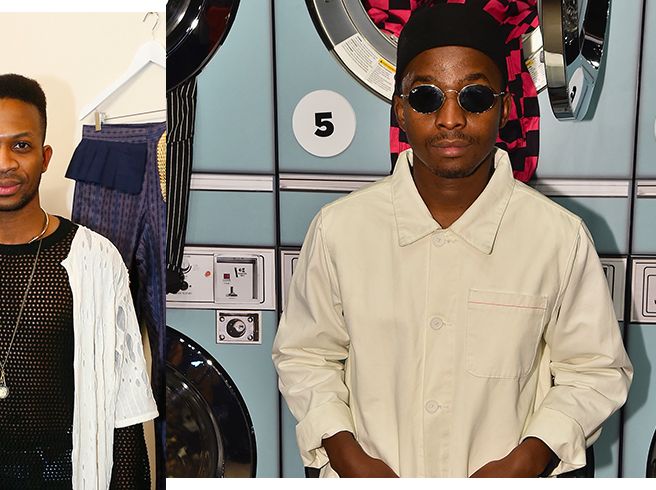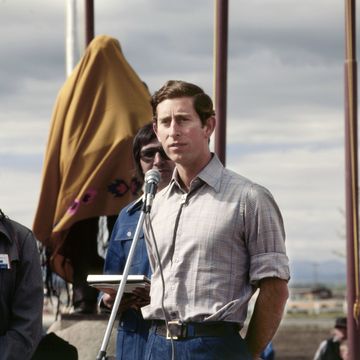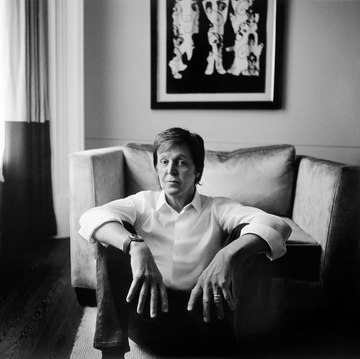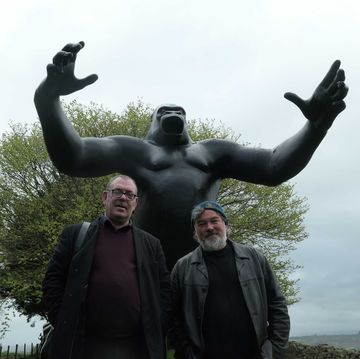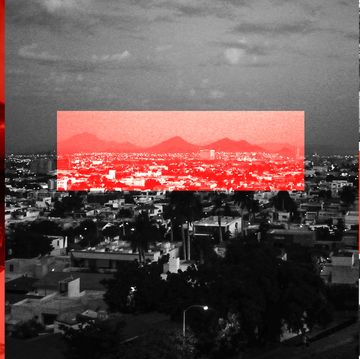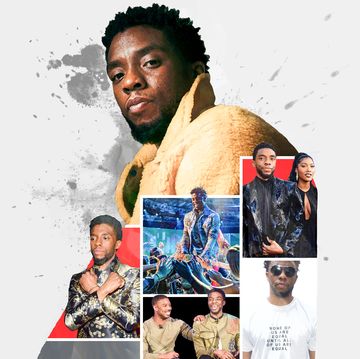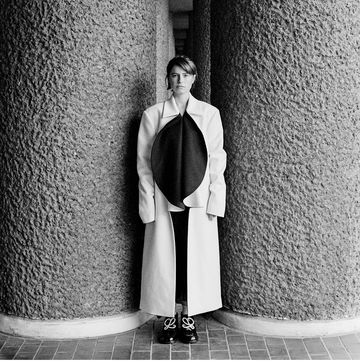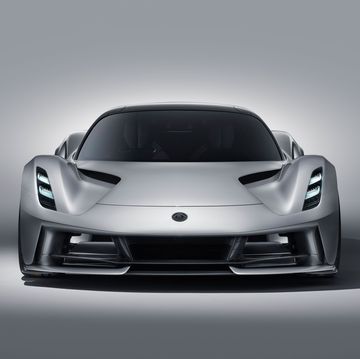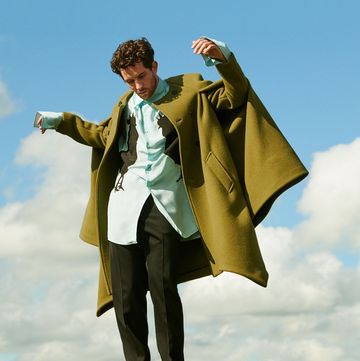Men’s fashion has never been in better health. As a global industry, it is forecast to outpace womenswear by 2022. Brands – from high street to high-end luxury – have become bolder and more adventurous in colour, pattern and shape. Old, restrictive dress codes have been shrugged off to embrace the aplomb of streetwear, the functionality of sportswear and a wider spirit of post-gender, post-rules freedom.
Vital to all of this has been an increase in the influence of fashion and talent from cities and continents beyond the traditional Western tastemakers of America and Europe. And nowhere has seen a rise in global prominence in men's fashion over the past decade more than Africa.
This is evidenced in the growth of Africa’s Fashion Weeks, where runways – like others outside the powerhouses of Paris, Milan and New York - have found eager new audiences on Instagram. Men’s Fashion Week Nigeria – the menswear answer to the long-established Lagos Fashion Week – has gone from strength to strength since launching in 2016, while South Africa Fashion Week, now into its 21st year, showcases some of the most exciting menswear talent in the world.
In Europe, at Pitti Immagine Uomo 89 in 2015, a group show called ‘Generation Africa’ caught the eye of international press and attendees. Hosted by the Fondazione Pitti Discovery and the ITC Ethical Fashion Initiative, the event propelled up-and-coming designers of the African diaspora on to the international stage.
One such brand was Philadelphia-based company Ikiré Jones, a label that aims to prove the point that “elegance is not exclusive to any particular culture, hue or country.” Such was the brand’s success that Chadwick Boseman recently donned one of their designs in the blockbuster hit Black Panther.
The West, of course, has a centuries-old relationship with African art, fashion and craftsmanship so in a sense, this is nothing new. As recently as five or so years ago, when sharp tailoring and neatly folded pock squares re-emerged as the menswear ideal, it was easy to trace the influence of the DR Congo’s dandy Sapeurs in European cities (not to mention Solange music videos). Today, it is the flowing silhouettes, swathes of fabric and geometric prints that emerge in much African fashion that seem to speak to the current zeitgeist in the West.
As Nigeria-based Orange Culture founder Adebayo Oke-Lawal puts it, “there isn’t just one type of man who needs to be spoken to.” Hailing from an environment that tried to suppress his aesthetic taste, Oke-Lawal rebelled by launching a collection deliberately breaking gender stereotypes. Not that this is Oke-Lawal’s only concern - he also likes to stretch the boundaries of what might be considered ‘African’ in terms of pattern, colour and silhouette. “I like to work around a non-cliché ideology of Africa,” says the 28-year-old visionary, and he is not alone.
Many African designers favour Pitti, the flamboyant Florence industry event, as the place to make their boldest Afro-sartorial statements. One of the most exciting names currently in fashion media is Trevor Sturman, a South African visual storyteller who, along with others, made a splash at Pitti Uomo Spring 2018 by turning out in sharp tailoring with Afrocentric accents and traditional accessories. The street style photographers lapped it up.
Naturally, this new generation has taken its cue from trailblazers who paved the way before they were even born. Take, for example, the likes of two stalwarts of the diaspora: British-Ghanaian Ozwald Boateng and Nigerian Duro Olowu. These designers have been bridging cultural barriers by turning the page on a tired narrative of African style for decades. Boateng is a style arbiter by dint of being an industry innovator who happens to have an African heritage, but it’s only in recent times that he has embraced the aesthetic in his creations. Now his ties have Kente patterns, a trope of West African design, and there are tribal prints in his tuxedos.
Why the striking update? In a recent interview Boateng spoke of a “real opportunity to redefine luxury with new markets opening up.” The Savile Row staple went on to predict that styles from Africa will be a big key to communicating the new notion of luxury. Yet one can’t help but feel that this embrace of heritage is a symptom of the movement, not the cause. Olowu, on the other hand, has always expressed his heritage in his fashion designs. Housed in his Mason’s Yard studio in London, they distinctly convey Africa’s oft-vibrant elegance. Popular with the likes of Keira Knightley and Michelle Obama, Olowu has shown that his creations are bold expressions of identity and pride of heritage. African prints, textiles and silhouettes are now being regarded less as short-lived trends and more as staples of identity. Serious efforts from the likes of Commes des Garcon, LAURENCEAIRLINE and newcomers Dent de Man can attest to this.
Whether taking a cue from the Western style of tailoring, bringing traditional dress to the fore at Fashion Weeks or simply expanding the vocabulary around taste, heritage and masculinity, the leaders of the pack show that African fashion does not have a single face or story.
These are just some the style arbiters bridging cultural barriers and changing the way we all look at African fashion.
Trevor Stuurman
Stuurman is no stranger to swishy media ‘best dressed’ lists, but the majority of his influence is carried out via Instagram - to 143,000 followers. His social feeds read like Kehinde Wiley paintings in human forms, packaged and ready to be reshared. The photographer, stylist and creative director channels all his artistic energy into alerting the world to Africa’s beauty, diversity and potential for innovation across overlapping fields.
And his works are as varied as his images. Stuurman partnered up with Vlisco (a Dutch textiles manufacturer that depends on Africa for up to 95% of its sales), following in the footsteps of fashion giants like Viktor and Rolf. Most recently, he shot the stills for Ciara’s latest Afro-inspired hit single and is the official photographer for the Gates Foundation at the United Nations Annual General Assembly. On the slightly more intrepid side of #BlackExcellence, Stuurman is not shy about his pride of his heritage. He was recently quoted as saying that he truly believes “now is Africa’s time” to shine before the global fashion landscape.
Ozwald Boateng
Ozwald Boateng is undoubtedly a giant of the fashion world; be it as a leader in Savile Row tailoring or as a one of a handful of African-heritage designers to have shaken the industry with their originality and creative ingenuity. He is credited with elevating classic tailoring in the eyes of his contemporaries and his creations have been worn by icons of music and film such as Jamie Foxx and Will Smith. Born to Ghanaian parents, the British designer has not only been recognised in the fashion world but also the world of academia (he holds several honorary doctorates including a Veritas Award from Harvard University). He has dressed everyone from Mick Jagger to Chiwetel Ejiofor and has garnered a slew of awards for his successful crusade to solidify classic tailoring in the world of haute couture.
However, Boateng hasn’t always worn his heritage on his sleeve, so to speak. His latest collection, AFRICANISM, being the first direct offering of that kind. In fact, the collection may well be a response to this growing hunger for true African identity in Western fashion. The designer now seems to be focusing on merging classic British tailoring with subtle tropes from his Ghanaian heritage. This is, perhaps, a bid to gain a new generation of Afropolitan tastemakers while keeping a hold of his classically-inclined clientele.
Orange Culture
Despite trials, Adebayo Oke-Lawal has seen his thought-provoking collections through to international success. His Lagos-inspired fashion label, Orange Culture, embodies the notion of trail-blazing with its non conformist, atypical approach to menswear through the lens of the African aesthetic. Showcased during London Fashion Week Men’s (to a lot of hype from digital audiences and fashion gatekeepers alike), the androgynous menswear brand was also a finalist for the LVMH prize in 2014 - just three years after its launch.
Oke-Lawal credits growing up around a vibrant city (Lagos) to his brand’s unique success, even if he finds fault in its rigid grip on harmful gender stereotypes. It was Oke-Lawal’s exploration of vulnerability and emotional intelligence that swayed local opinion on his brand - though the journey is nowhere near complete.
Petit Noir
Yannick Ilunga, A.K.A Petite Noir, is a musician who’s on and off stage persona quickly became as memorable as the addictive trip-hop sound of his music. Born in Brussels to Congolese parents, Ilunga was brought up in Cape Town, a place he considered the cosmopolitan hub for creative African youth. His music videos are often abstract, colourful extensions of his lyrics and, although his heritage is clearly visible, he also indulges in mixing cultural metaphors. “I believe that whatever I do is inherently African, because I already embody it in who I am,” he says.
Having said that, the diaspora resonates loud and clear in most of Ilunga’s imagery. That’s because he is on a mission to portray African creativity in a new light. He is the self-dubbed pioneer of ‘noirwave,’ a movement he began in 2012 with director RhaRha Nembhard that has its “roots in music but it’s vision on the creative future.” Ilunga appears to use all creative outlets to counter the single story popularly known of Africa. “When you think of Africa, mainly negative images come to mind,” says Ilunga. “It’s like Africa doesn’t get a fair chance.” The artist feels this narrative needs to change and shares his perspective with his fans on Instagram.
Duro Olowu
As Olowu’s famous fans include the likes of Saoirse Ronan, Tracee Ellis Ross and Thandie Newton, it’s safe to say that his creations aren’t geared towards men. But the Nigerian designer holds significant influence within the fashion industry at large. The disruptive nature of his penchant for clashes and his dismissal of seasonal trends throws a question mark on what we are told (and therefore consider to be) ‘staples.’ That’s why his contribution to the way others view African fashion was invaluable from the start.
Almost overnight, bold colours and loud prints became contenders on the red carpet, or on the kind of suave talk shows that stars depend on for good PR. His approach to design not only made the industry question the norm, but showed that there’s more than one way to be ‘elegant.’ So Olowu’s designs boldly counter British tastes for pared back style and subvert the notion that elegance is solely synonymous with the European aesthetic. With Olowu’s take on fashion, variety is the spice of life.
